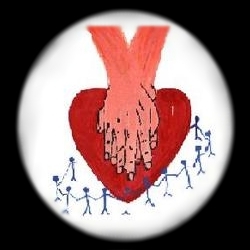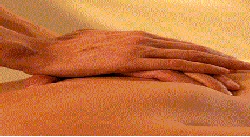

CPR stands for Cardiopulmonary Resuscitation - a combination of rescue breathing and chest compressions delivered to victims thought to be in cardiac arrest. The chain of survival continues……
“The chain of survival is weakest at its strongest link .the heart can stop beating in many situations, can occur to practically anyone, anywhere and at any time”. ______________________________________________________________________ HISTORY OF CPRModern CPR developed in the late 1950s and early 1960s. The discoverers of mouth-to-mouth ventilation were Drs. James Elam and Peter Safar. Though mouth-to-mouth resuscitation was described in the Bible (mostly performed by midwives to resuscitate newborns) it fell out of practice until it was rediscovered in the 1950s. In early 1960 Drs. Kouwenhoven, Knickerbocker, and Jude discovered the benefit of chest compression to achieve a small amount of artifical circulation. Later in 1960, mouth-to-mouth and chest compression were combined to form CPR similar to the way it is practiced today. SUDDEN CARDIAC ARREST Sudden cardiac arrest (SCA) is one of the leading causes of death among adults in the world. Each year, it claims the lives of an estimated 100,000 in India. Once every one or two minutes, another Indian succumbs suddenly, without warning. FACTS PERTINENT TO INDIA There are 100,000 cardiac arrests in India each year and only 1% of them survive. · 75% of the cardiac arrests occur at home. · The brain can survive only 4-6 minutes without oxygen. Therefore circulation of oxygenated blood must be restores within the critical period of 4-6 minutes. · Medical care is almost never available within 4-6 minutes in India. Most victims of sudden cardiac arrest are middle-aged or elderly. Though the average victim is about 65-years-old, some victims are in their 30’s or 40’s. Most collapse at home. For many, there is no previous history of heart problems. Sudden cardiac arrest is often the first symptom. SUDDEN CARDIAC ARREST DOES NOT HAVE TO BE FATAL Sudden cardiac arrest does not have to result in "sudden death." When sudden cardiac arrest occurs, most victims have an abnormal heart rhythm called ventricular fibrillation (VF). When the heart is in this state, it cannot beat in a coordinated fashion and blood does not circulate to the heart and the brain. First, the pulse stops. Then, breathing stops. The victim loses consciousness, collapses and appears lifeless. But the victim doesn't have to stay that way. Ventricular fibrillation is a treatable rhythm. In this state, electrical energy is present in the heart, but it is chaotic. If the heart can be shocked quickly with a defibrillator, a normal heart rhythm may be restored. This is called defibrillation. If this shock is delivered within minutes after collapse, many victims can survive. THE KEY IS TO BE QUICK In more typical community settings, victims of sudden cardiac arrest rarely survive. Why? Most victims do not have immediate access to prompt, definitive treatment. Too much time elapses before CPR is done as a basic life support till the defibrillator arrives-if it arrives at all. In India the time taken for EMS(Emergeny medical services) to arrive range from 25 min-35 min. Times of India dated 18th October 2005 states the average time for the ambulance to transport the patient to the ICU is 33-35 minutes. There, only 5 percent of witnessed VF victims-1 to 2 percent of all cardiac arrest victims-survive THE EMERGING NEED FOR PROMPT CPR Sudden cardiac arrest kills one adult every one to two minutes. The key to survival is prompt CPR. The challenge for communities is to respond, with CPR training on hand, to every victim of sudden cardiac arrest within minutes. If the time from 1062 call to defibrillation is seven minutes or less, as many as one-third to one-half of sudden cardiac arrest victims found in ventricular fibrillation can be resuscitated. There is no point having the best doctors in the best equipped hospitals if they are not given an opportunity to exercise the skills if the cardiac arrest victim is brought in too late or if the brain is already dead. In all reports of survival, the shorter the time from collapse to CPR to defibrillation, the better the chances of survival. If CPR is delayed for more than 10 minutes, survival rates drop to less than 5 percent.
Once victims are resuscitated, the prospects for long -term recovery are very promising. Eight in ten survivors will live at least a yearlonger. Six in 10 survivors will live five more years. The American Heart Association and other organizations have adopted a simple action plan designed to help communities improve survival from sudden cardiac arrest in adults. This plan is called the Chain of Survival. SUDDEN CARDIAC DEATH IS NOW A PUBLIC HEALTH PROBLEM Survival rate following BLS and ACLS (ref. Nightingales manual)
This chart indicates that help should arrive within 8mins ideally which is not possible. Therefore the early initiation of CPR before reaching the hospital increases survival rates to 43 % .Sudden cardiac arrest is a public health problem which can be tackled by strengthening the weakest link in India – EARLY CPR. |
|||||||||||||||||||||||||||||||||||||||||||||
